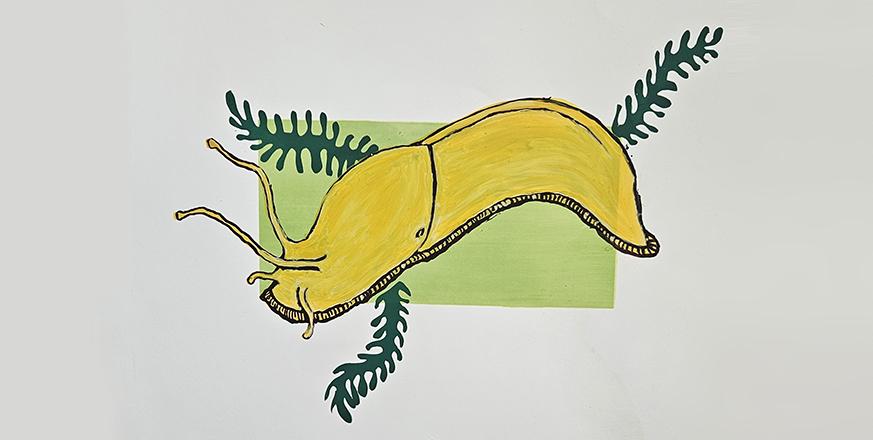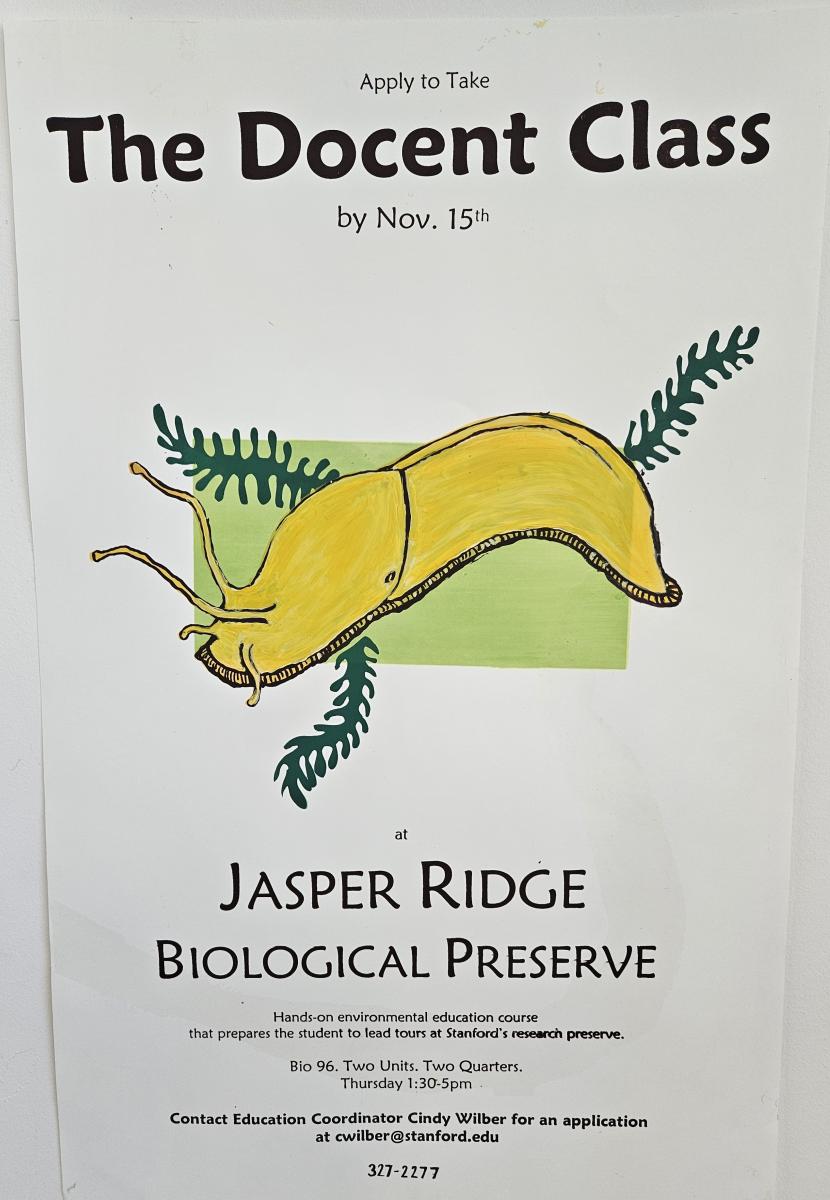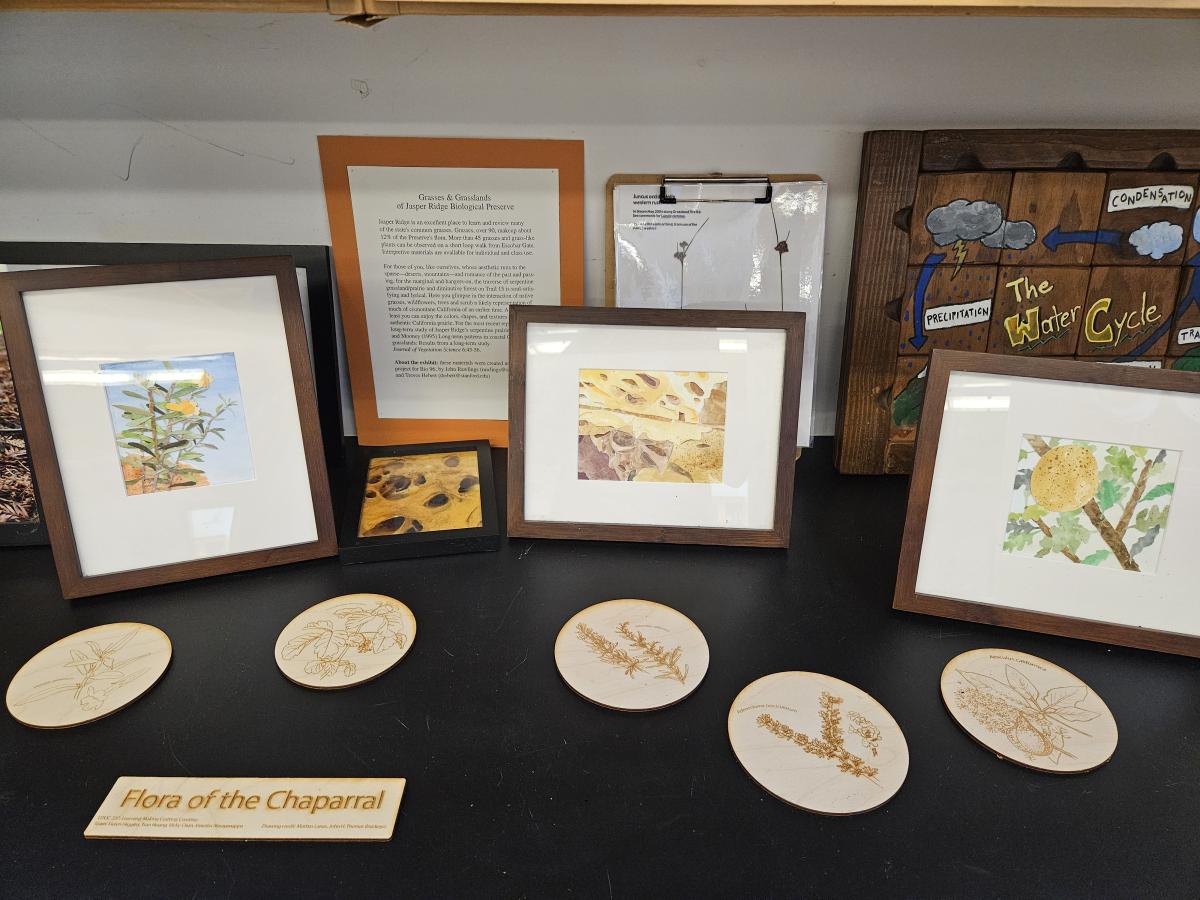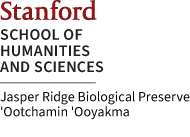Fifty Years of Student-Driven Research at Jasper Ridge Biological Preserve ('Ootchamin 'Ooyakma)

Since its inception in 1975, the 20 week field course “Ecology and Natural History of Jasper Ridge Biological Preserve” has trained hundreds of Jasper Ridge docents over the years. While there have been several course number and curriculum changes in that time, one feature that has remained steady is the opportunity for students to conduct an independent course project.
As the course and docent training program approaches its 50th year, we reflected on two things. First, how can we support staying in touch with our alumni and connect them with our next generation of docents? This led us to create and launch an Ecology and Natural History of Jasper Ridge Alumni Directory for our affiliates. Second, we now have an impressive body of student-led projects. Nearly 800 students have now taken the course. Collectively, they have designed independent projects that span several disciplines and media. This is not surprising, since the course is multidisciplinary by design and enrolls a diverse and intergenerational student cohort.

One of our favorite “finds” at the field station recently is this printed poster advertisement for the docent class, year unknown. Hand-painted brushstrokes in acrylic bring the banana slug (almost) to life. A subtle stripe of gloss was printed on the poster to show its slimy trail.
Since my start at JRBP('O'O) last summer, I have been leading an effort with staff to develop an archive of all student projects over the years. My research background in paleoecology has focused on understanding past environments from evidence in the sediment record. I put those ‘reconstruction’ skills to work right away as the new Associate Director of Environmental Education. We wanted to know the breadth of student work that this landscape has inspired over the past 50 years. It was several months of searching through old hard drives, file cabinets, and about 300 CD-Rs to find copies of students’ projects. The rest of the Jasper Ridge team was instrumental in this task, offering technical support, help with data entry, and their knowledge on the history of the course.
As our collection of project titles grew, a few periodically caught our eye. There was “Brassica at Boething: To Be or Not to Be (Eaten),” “The Dancing Forest,” and “The People’s Guide to Jasper Ridge.” The title “Quercus species identification, frequencies, size, and development in the Serpentine and Adjoining Grasslands” represents the landscape-scale inquiries that are possible at a place like Jasper Ridge - and the potential to explore how geology influences chaparral vegetation communities.
Compiling the final list also inspired questions on what patterns we could learn from it. For example, what has been the most-studied organism at JRBP('O'O)? Are there certain species or subjects that have fascinated our students across decades and generations? A digital list of all project titles allowed us to answer this question with textual analysis that examined the frequency of certain words.
This word cloud is the result of 475 separate project titles. This analysis showed us that the most frequent word in project titles was “plant.” This was shortly followed by a more specific plant - “oak” and “Quercus.” “Searsville,” “creek,” “lake,” and “aquatic” were also frequent occurrences, showing the importance of Jasper Ridge’s water bodies.

Word cloud produced from the titles of student projects since 1975. The larger and more prominent the word, the more frequently it occurred in our master list.
We are thrilled that we found a record of 60% of student projects from the last 50 years, with copies now archived here at Leslie Shao-ming Sun Field Station. This would not be possible without the careful organization of past education coordinators and directors Monika Bjorkman, Cindy Wilber and Jorge Ramos. Their direction and generous one-on-one guidance was evident in the breadth and quality of work.
Alumni Directory
Our purpose with the new Ecology and Natural History of Jasper Ridge Alumni directory is twofold - to support alums staying in touch with the preserve and each other, and to show the scope of independent work done by past students.
The ability to browse and view this list of alumni and project titles will be invaluable to new cohorts in “Ecology and Natural History of Jasper Ridge Biological Preserve.” We respect that projects are part of a student’s private academic record, and will not share completed projects without first requesting the permission of the author. That said, there is an incredible opportunity for the next generation of docents to build upon prior work, as some projects include field survey data from decades ago. These are now important baseline data, and re-analysis would likely show measurable change due to development, climate change, and the impact of invasive species. We will reach out if a new student is compelled to learn from, and build upon, your “Ecology and Natural History of Jasper Ridge” project.
Send us updates!
We would love to be in touch with course alumni! We have set up this Google Form to support updates to your contact info in our directory. We are also interested in copies of past projects we may not have yet. You can also use this form to opt into having your project shared within our community, including the next generation of docents at Jasper Ridge Biological Preserve ('Ootchamin 'Ooyamka).
By Katie Glover

A selection of past student projects that focus on Jasper Ridge’s flora and geology, on display in the classroom at Sun Field Station.



